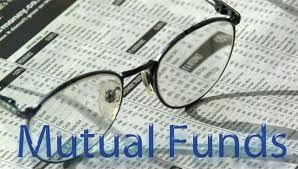
You would think that active mutual fund managers would have an easier time beating their benchmarks when most indexes were down for the year. These so-called expert stock pickers are supposed to underweight stocks in the poor performing sectors and overweight stocks in the top performing sectors.
The root of the problem is pretty simple! Most managers were underweight many of the stocks that saw the biggest gains. It’s hard to beat the market when you’re not on board with the best-performing companies. That was the fate of most mutual fund managers, who again fell short of their benchmarks over the past 12 months.
In a year that many had touted as ripe for the return of stock pickers, just 27 percent of large-cap core funds topped the S&P 500, according to a recent Goldman Sachs analysis. That number falls well below the 10-year average of 36 percent.
The business media referred to the best performing stocks in the S&P 500 as the “FANGS.” Most fund managers missed owning; Facebook (up 35.8%), Amazon (up 117.6%), Netflix (up 140%) Google (up 45.2% and is now Alphabet) and Starbucks (up 46.7%).
When I was a financial advisor, I didn’t expected the mutual fund managers to outperform the markets during a raging bull market. Bull markets tend to get overvalued. I did expect a fund manager to lose less in down markets and outperform during years of modest returns. In my humble opinion, a 27% success rate for mutual fund managers in 2015 is just sad. The odds are really stacked against you if only 36% of active managers beat the index on average.
Here is why their results are disappointing
- They tend to reduce their exposure to their winning stock picks when the percentage of anyone stock exceeds 5% of the portfolio. Basically trimming back their winners instead of letting them run higher.
- They still own stocks in poor performing sectors instead of avoiding them all together. For example: the S&P 500 contains 10 sectors, if energy makes up 9% of the index then fund managers will underweight this sector by having 5% of their portfolio in energy names.
- They trim their winners and average down on their losers, hoping for a rebound.
- Their management fees are high and paid monthly which reduces their returns over the course of the year. (Fee based advisors get paid by mutual fund companies)
- Some financial advisors will recommend mutual funds based on how much they will get paid and not based on long-term performance of the fund manager. (Be careful, a lot of bad apples out there)
Some investors in 2015 have flocked to exchange-traded funds, these passively managed vehicles track market indexes like the S&P 500 and offer lower fees, more liquidity and tax advantages.
For the year, the scorecard is stark: $198.8 billion in inflows for global equity ETFs and $177.2 billion in outflows for mutual funds, according to Bank of America Merrill Lynch.
Mutual funds remain the leader by a large margin, with $13.2 trillion in assets excluding money market funds, according to the latest data from the Investment Company Institute. However, ETFs are catching up, with the $2.1 trillion currently under management, an increase of 11.3 percent from the previous year.
This year’s results will only add fuel to the active versus passive investing debate. To me it is a simple decision, anybody can make money in a raging bull market! If you don’t feel comfortable investing in ETFs, stick with managers that lose less in down markets and have a history of making positive returns.
I have to warn you that I am somewhat bias against active managed mutual funds because I used to pick them for a living. I can tell you from personal experience that the majority of the advisors in my former office, including myself, found it very difficult to pick winners. Even if I was lucky to find a few good funds, there is no guarantee that the successful manager running the fund won’t be lured away by another mutual fund company. The end result is a rush to the exits triggering massive redemptions as everyone follows the successful manager and turns a winning mutual fund into a loser.

Very interesting post. I will have to take another look and check on performance. Last time I checked the only growth I had came from what I put in it. It barely made more than your average savings account. Not good!
LikeLike
My guess is that your 401k has 30% bonds, 10 % global equities and 60% U.S. equities. Not sure about your risk profile but I would bet that half your U.S. equities are in dividend paying stocks.
After fees, your bonds gave you a 1% return, your global funds may have a 7% return if hedged or flat because of the strength of the U.S. dollar and the rest is flat or down 3%
Rico
LikeLiked by 1 person
I just looked at my portfolio this morning and I’m NOT happy with the performance. I plan on getting right on the phone as soon as they are open for business.
I show my YTD rate of return as -1.54% and my personal rate of return as -4.655%. I’m putting 25% of every paycheck in this ridiculous account. I was thinking about increasing it to 40%, but now I won’t bother. My investment mix is 5% Bonds, 18% Balanced/Asset, 77% Stocks. It looks like I have a mix of low, medium, and high risk.
Something is not right here. I have my account with John Hancock and I have gone through three people with no luck. This is my employer plan of course, so I can’t do much to change it. I don’t want to give up the full match, plus, I am 100% vested.
Looks like between regular pay contributions, the employee match and profit sharing bonuses, I contributed $38,000. Of course, I’m losing money, so what good is it.
When I read this statement, it shows that I’m on target to receive $5700.00 per month upon retiring at 65. Are they on something? Seriously?
Anyway, I figured you might be interested in how they allocated the fund. Needs to change of course!
LikeLike
I forgot to add that the $38K was my contribution from last year alone. Didn’t want you to think it was my entire balance. I also have a Roth IRA which made a return of 4% last year and my “play” fund with TD. I was going to combine them, but I was told that the taxes wouldn’t be worth it. 🙂
LikeLike
I usually tell my family and friends to always put just enough money into their employer’s pension plan to get their matching contribution. You should never turn down free money. However, most employer plans have high management fees so I recommend opening up a self directed retirement plan and buy ETFs with very low fees.
If you can continue to put $38K a year for the next 15 years into your retirement account and get a 5% compound return, you should have over 1 million dollars in your retirement account.
Rico
LikeLiked by 1 person